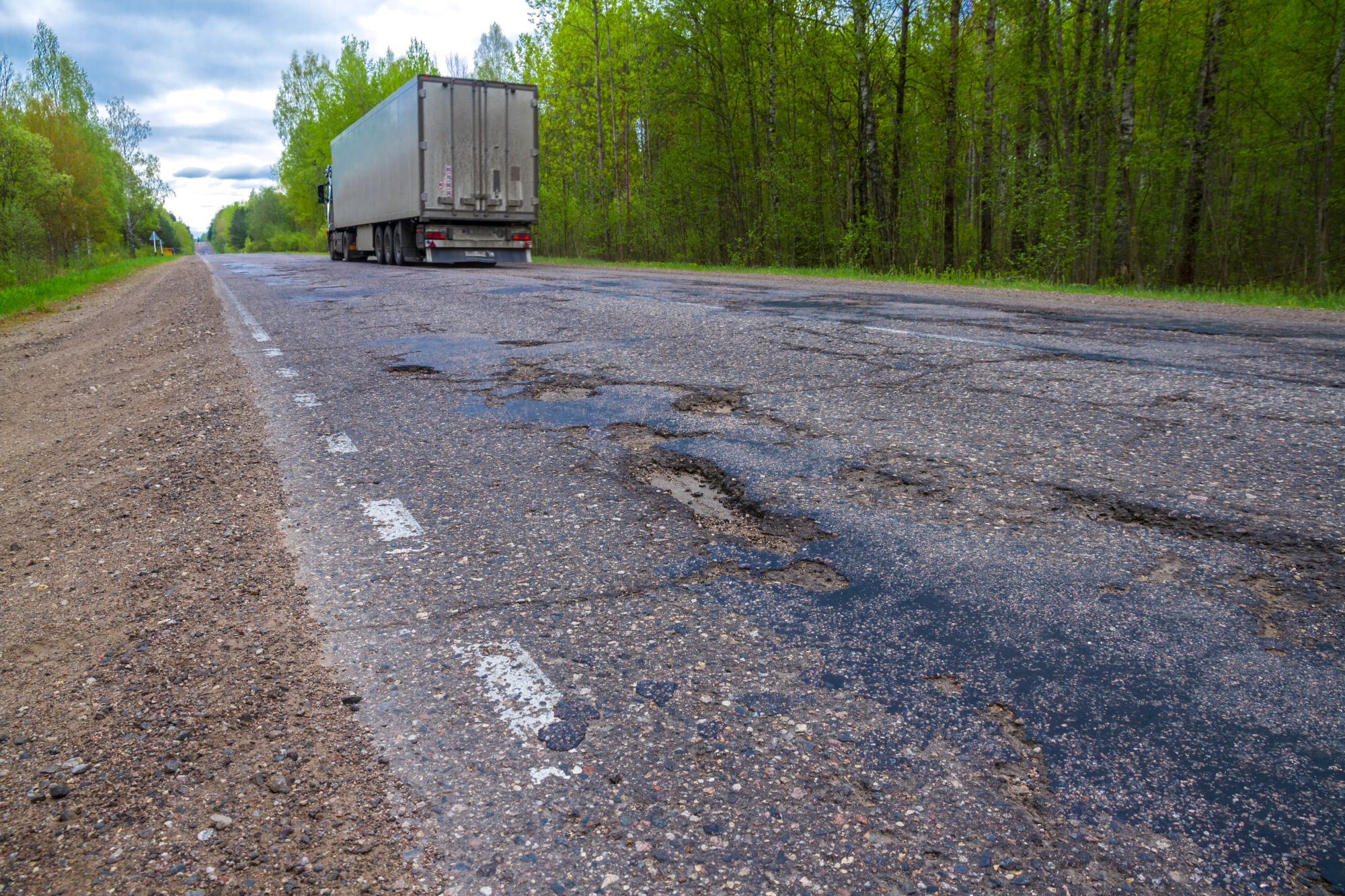
Guest
Ako by financovanie infraštruktúry v Spojenom kráľovstve mohlo ovplyvniť odvetvie mobility
Vytvorené: 02. 07. 2025
•
Aktualizované: 03. 07. 2025
Po rokoch nejednotných investícií a narastajúcich dopravných zápch sa vláda Spojeného kráľovstva zaviazala, že v nasledujúcom desaťročí vynaloží na infraštruktúru viac ako 700 miliárd libier, z ktorých veľkú časť vyčlení na cesty v krajine. Vplyv 10-ročnej stratégie pre infraštruktúru na komerčných vodičov a širšie odvetvie mobility by mohol byť transformačný - od nových koridorov pre nákladnú dopravu až po najmodernejšie digitálne dopravné systémy.
Cesty dosahujú bod zlomu
Cesty sú len jednou z častí dopravného mixu v Spojenom kráľovstve, ale prepravuje sa po nich drvivá väčšina tovaru. Podľa údajov vlády sa 81 % vnútroštátnej nákladnej dopravy a 75 % dovozu a vývozu uskutočňuje po cestách, čo z nich robí základ logistiky a hospodárstva Spojeného kráľovstva.
Napriek tomu, že cestná sieť Spojeného kráľovstva tvorí len niečo viac ako dve percentá jej dĺžky, po strategickej cestnej sieti (SRN) sa uskutočňuje 34 % všetkých ciest vrátane mnohých časovo najcitlivejších trás s vysokou intenzitou nákladnej dopravy. Ich stav a kapacita majú pre vodičov, ktorí ich využívajú, priamy vplyv na bezpečnosť, efektívnosť a výkonnosť dodávok.
Z údajov Index stavu ciest (RCI) však vyplýva, že približne 24 500 míľ - viac ako každá desiata míľa - siete v Anglicku a Walese si bude pravdepodobne vyžadovať údržbu v nasledujúcich 12 mesiacoch.
Viaceré nedávne núdzové uzavretia mostov ešte viac odhalili zraniteľnosť siete. V niektorých oblastiach vytvorili popraskané nosné konštrukcie a desaťročia starý betón nebezpečné podmienky pre všetkých účastníkov cestnej premávky - najmä pre nákladné vozidlá, ktoré často ako prvé čelia hmotnostným obmedzeniam alebo nútenej zmene trasy.
Vláda v rámci svojej stratégie v oblasti infraštruktúry reagovala novým fondom vo výške 1 miliardy GBP na opravu a rekonštrukciu mostov, križovatiek a nadjazdov v havarijnom stave. Je to vítaný krok, ktorý odráža rastúci tlak priemyslu. Pre profesionálnych vodičov by to mohlo znamenať menej obchádzok, menej náhlych obmedzení a menej času strateného kvôli infraštruktúre, ktorá nie je vhodná pre modernú logistiku.
Bezpečnosť však nie je len o tom, ako sa vyhnúť katastrofickým poruchám. Ide aj o dlhodobú odolnosť - zabezpečenie správnej údržby ciest, mostov a odpočívadiel skôr, ako sa stanú nebezpečnými. Tento obnovený dôraz na údržbu signalizuje, že údržba ciest môže konečne začať zodpovedať rozsahu, veľkosti a rýchlosti vozidiel, ktoré sú od nich závislé.

Problém výmoľov
Aj keď v oznámeniach dominujú projekty, ktoré majú veľký ohlas, najväčší vplyv na vodičov má často každodenný stav povrchu ciest. Pre pracovníkov v nákladnej doprave sú výmole viac než len nepríjemným problémom - predstavujú trvalé bezpečnostné riziko a nákladnú záťaž.
Opakované vystavenie nerovnému povrchu zvyšuje opotrebovanie nákladných vozidiel, poškodzuje pneumatiky a odpruženie a prispieva k únave vodiča. V niektorých prípadoch si poškodenie výmoľov vynútilo odstavenie vozidiel z ciest kvôli núdzovým opravám, čo narušilo dodávky a ovplyvnilo dohody o úrovni služieb.
Riziká pre vodičov sú osobné. Snaha vyhnúť sa výmoľom - najmä na úzkych alebo frekventovaných cestách - môže viesť k nebezpečným manévrom. Ak sa k tomu pridá zlé počasie, obmedzené osvetlenie alebo napätý harmonogram dodávok, riziko sa ešte zvýši.
Vláda v rámci svojho širšieho úsilia o infraštruktúru vyčlenila 1,6 miliardy libier ako súčasť Plánu zmien na modernizáciu miestnej infraštruktúry vrátane výmoľov, popraskaných povrchov a opotrebovaných vozoviek. Cieľom je dostať cesty na bezpečnejšiu a spoľahlivejšiu úroveň - najmä na cestách, ktoré sú zaťažené nákladnou dopravou.
Problém sa nevyrieši zo dňa na deň, ale znamená zmenu priorít - uvedomenie si, že blaho vodičov začína od základov a že bezpečná a pohodlná cesta závisí od dobre udržiavaných ciest.
Pre vozové parky to znamená menej neplánovaných opráv, menej poistných udalostí a menej prestojov vodičov. Pre vodičov to znamená menej otrasov, menej stresu a o jednu starosť menej počas dlhej zmeny.
Spoľahlivá sieť
Blaho vodičov je v centre pozornosti modernej dopravy. Dlhý pracovný čas, meškajúce rozvrhy a nedostatočné vybavenie si vyberajú svoju daň. Najnovšie plány vlády však dávajú nádej na bezpečnejšiu a lepšie prepojenú sieť.
V celom Spojenom kráľovstve majú zariadenia pre vodičov problém udržať krok s dopytom. Parkovanie je často obmedzené, služby sú obmedzené a mnohé odpočívadlá nemajú dostatočné pohodlie a bezpečnosť - najmä pri diaľkovej doprave. Aj preto vláda zlepšuje prostredie pre vodičov: bezpečnejšie parkovanie, lepšie sociálne zariadenia a reformy plánovania na urýchlenie výstavby nových miest.
Zároveň sa zrýchľujú investície do nabíjacích a tankovacích centier pre elektrické a vodíkové nákladné vozidlá. Spoločnosť Moto sa napríklad zaviazala nainštalovať viac ako 300 elektrických nabíjačiek pre nákladné vozidlá na 23 miestach na diaľniciach, zatiaľ čo Ashford Truckstop sa mení na hlavné nabíjacie centrum pre nákladnú dopravu cez Lamanšský prieliv. Cieľom týchto zariadení nie je len udržať vozidlá v pohybe, ale poskytnúť vodičom bezpečné a dobre vybavené miesta na odpočinok a dobíjanie.
Ak vaši vodiči hľadajú bezpečné miesto na zastavenie, naša aplikácia intruck im umožňuje identifikovať a rezervovať odpočívadlá v Spojenom kráľovstve a Európe. [Viac informácií a možnosť stiahnuť si ju tu] (https://intruckapp.com/)

Náklady na preťaženie
Dopravné zápchy, nepredvídateľné trasy a tlak na dodržiavanie termínov doručenia prispievajú k stresu a únave vodičov - a robia z ciest nebezpečnejšie miesto.
Veľké modernizácie infraštruktúry, ako je prechod cez dolnú Temžu, výstavba diaľnice A66 a zlepšenie na ostrove M60 Simister Island, majú za cieľ znížiť preťaženie a znížiť riziko nehôd na niektorých z najznámejších dopravných uzlov v Spojenom kráľovstve.
Okrem toho sa stále presadzuje zavádzanie digitálnych nástrojov, ktoré podporujú bezpečnejšie a plynulejšie cestovanie. Dopravné upozornenia v reálnom čase, inteligentné detekčné systémy a lepšie riadenie dopravy pomôžu manažérom vozových parkov a vodičom rýchlo reagovať na poruchy a v prípade potreby zmeniť trasu.
Národný program digitálnych ciest už pripravuje základy s inteligentnou infraštruktúrou, ktorá dokáže skôr odhaliť nebezpečenstvo, inteligentnejšie riadiť dopravné toky a poskytovať jasnejšie informácie v reálnom čase.
Čo to znamená pre mobilitu?
Krok vpred pre mobilitu a blaho vodičov. Koordinované národné úsilie o riešenie zaostávajúcej infraštruktúry v Spojenom kráľovstve a o modernizáciu ciest spôsobom, z ktorého budú mať prospech vodiči, ktorí sa na ne najviac spoliehajú.
Skutočnou skúškou bude doručenie. Premeniť finančné prostriedky na hmatateľné zlepšenia si bude vyžadovať počúvanie vodičov, učenie sa zo skúseností z prvého kontaktu a meranie úspechu podľa toho, ako sa na cestách cítia - nielen podľa toho, koľko stoja.
"Táto nová vlna investícií nie je len o skrátení času jazdy," hovorí Stuart Willetts, manažér pre rozvoj podnikania v Spojenom kráľovstve v spoločnosti SNAP. "Ide o budovanie dopravnej siete, ktorá podporuje pohodu vodičov, prevádzkovú efektívnosť a prechod na čistú mobilitu. Už sa nevieme dočkať výsledkov."
Chcete zistiť, ako sa vyvíja mobilita vo vašom okolí?
Použite mapu SNAP na vyhľadanie služieb a riešení vo vašom okolí - bez ohľadu na to, na akej ceste sa nachádzate.



